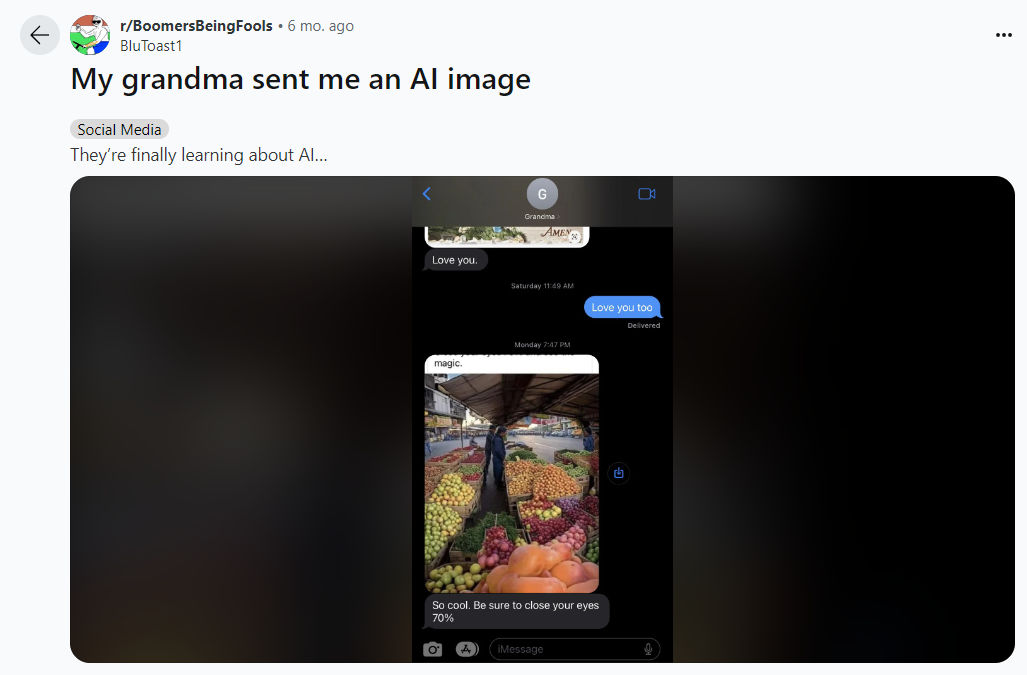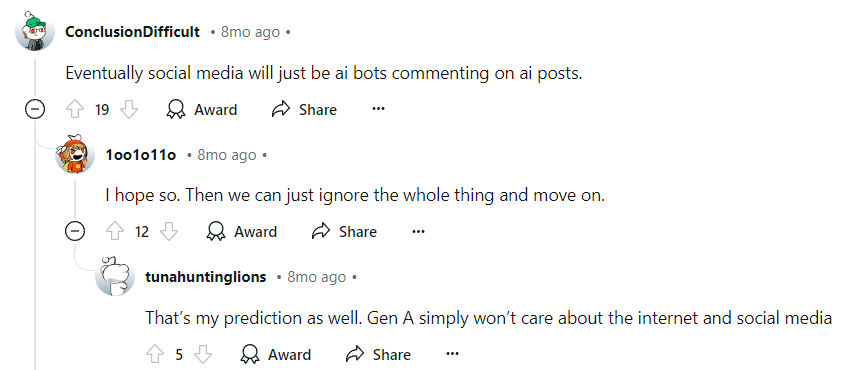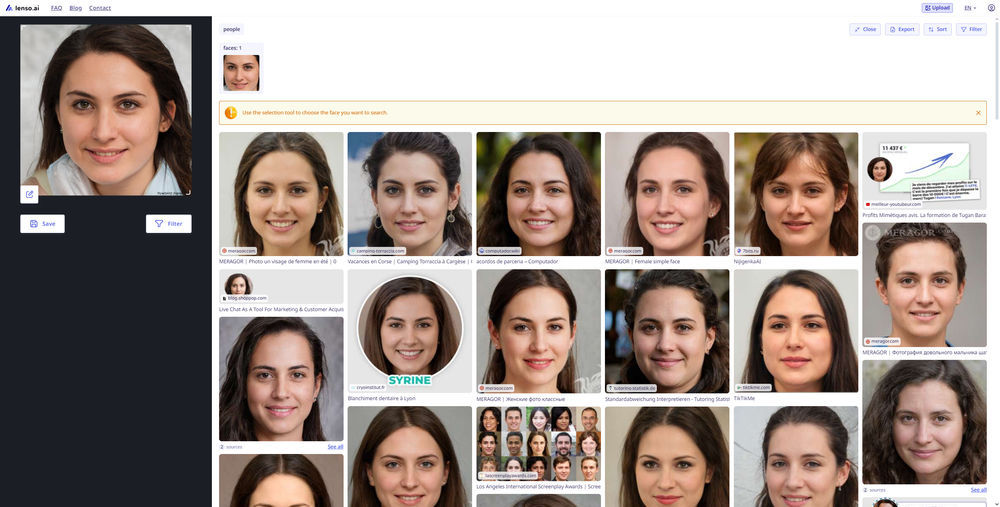.jpg?updatedAt=1727350894819&tr=w-930,h-720)
Preview in:
How Are They Made?
Creating social media spam is easy—all it takes is practice and Stable Diffusion. Stability.ai’s platform has gained popularity due to its incredible technology, allowing users to create images so lifelike that it can be hard to distinguish them from real photos.
Of course, many other tools like DALL-E or Playground AI can be used to generate images. Regardless of the tool, the goal is the same: create pictures so realistic that the human eye can’t tell them apart from actual photographs.
The Issues with Generative AI
- Deepfakes and Misinformation: Fake images and videos can be used to scam people, spread misinformation, and manipulate social media algorithms.
- Copyright and Intellectual Property: The rise of AI-generated art raises questions about copyright. Can an AI be considered the author of its creations? How do we protect the rights of artists whose work is used to train these models?
What Kind of Posts Are We Talking About?
Have you seen them? That elderly couple you saw on Facebook this morning might actually be an AI-generated scam designed to gather comments. While some say it’s mostly “boomers” who fall for these fakes, anyone can be deceived.
Our team took a deeper look to find the best examples of these manipulations. We began our search on Reddit, where users point out and critique these fabrications.
Here are just a few prime examples:
 Shared on r/BoomersBeingFools
Shared on r/BoomersBeingFools
 Shared on r/facebook
Shared on r/facebook
We also checked Twitter (X):
 Image credit: @venturetwins
Image credit: @venturetwins
These are just a few examples, but there are many more out there. We must remain vigilant and take a closer look at what we see online to avoid falling for scams.
The Aftermath: Dead Internet Theory
According to this article, the "Dead Internet Theory" is a conspiracy theory that suggests the internet is now largely composed of bot activity and automatically generated content, manipulated by algorithms to control the population and reduce organic human interaction. Some believe these bots were intentionally created to manipulate algorithms and boost search results for commercial or political purposes.
While most people don’t subscribe to this theory, some internet users fear that it may come true, with AI and bots becoming more prevalent each day.
 Redditors discussing the rise of online bots.
Redditors discussing the rise of online bots.
How to Spot AI-Generated Images: 5 Tips for 2024
1. Extra Fingers, Toes, or Teeth
One of the easiest ways to spot AI-generated images is by counting body parts. Many AI images feature extra fingers, toes, or teeth.
2. Blurry or Painting-Like Textures
Plasticine-like wrinkles, sharp lines, or blurry textures are often clear signs of AI-generated content.
3. Deformed Text
AI struggles with letters. If the text appears warped, blurry, or nonsensical, there’s a high chance the image is AI-generated.
4. Blurry Backgrounds
This is especially common on sites like This Person Does Not Exist. The person in the image may look fine, but the background often appears blurry or vague, lacking specific detail.
5. Look at the Details
At first glance, an AI image may seem normal. But upon closer inspection, accessories, ornaments, or backgrounds might appear distorted or unnatural. If something looks off, you’re probably looking at AI.
Worried You're Dealing with a Fake Image?
Spot Fake Pictures with lenso.ai
Lenso is an AI-powered reverse image search tool that can identify identical and similar images in seconds, helping to flag AI-generated content.
How It Works:
Faces
If you upload a face to lenso.ai and it returns vaguely similar images of different people, all appearing AI-generated, it’s likely that the original image is AI as well.
Suspect it's AI? Test it Out:
- Download a picture from thispersondoesnotexist.com, a website filled with AI-generated images.
- Visit lenso.ai and upload the image on the main page.
- The results should show many similar faces, all AI-generated.
 Examples of other AI-generated faces.
Examples of other AI-generated faces.
*Available in selected regions.
Clothes, Buildings, and More
Most AI-generated images return results from other AI-generated sources. To test it, simply upload an AI-created image and check the sources. Often, the results will indicate the image you uploaded is AI-generated too.

Remember: These tips won’t always work, so trust your instincts, use common sense, or consult online forums if you’re unsure whether an image is AI-generated.
Continue reading

News
AI Reverse Image Search as a Competitive Intelligence Tool for Ecommerce Brands
Scroll through any ecommerce site today and you’ll see polished product photos everywhere. Those images carry far more information than most brands realize. With AI reverse image search, they turn into a practical source of competitive intelligence.

News
Lenso.ai API | Facial Search and Reverse Image Search API
If you are looking for a face search API or a reverse image search API for your page, tool, or software, lenso.ai’s API is a product for you! Read this article to find out what features lenso.ai’s API offers, and how you can use it in your own application. There were also some changes made for current clients - don’t miss them!

News
Best PimEyes Alternatives & Competitors for reverse face search in 2025
Looking for an accurate facial recognition tool that's not the popular one? Discover and try best PimEyes alternatives and competitors in 2025.

News
Is there a better tool than PimEyes for face search?
You’re probably familiar with PimEyes as one of the most well-known face search tools. Maybe you’ve tried it yourself or just read about it. But is there a better tool than PimEyes to help you find your photos online? Let’s find out.

News
Top 5 Ways to Find Your Leaked Photos Online
If you think the images you uploaded have been shared without your knowledge, or if you suspect someone shared your photos online without your consent, keep reading. In this article, we will show you 5 ways to find your leaked photos online and take them down, as well as how to avoid future leaks.
